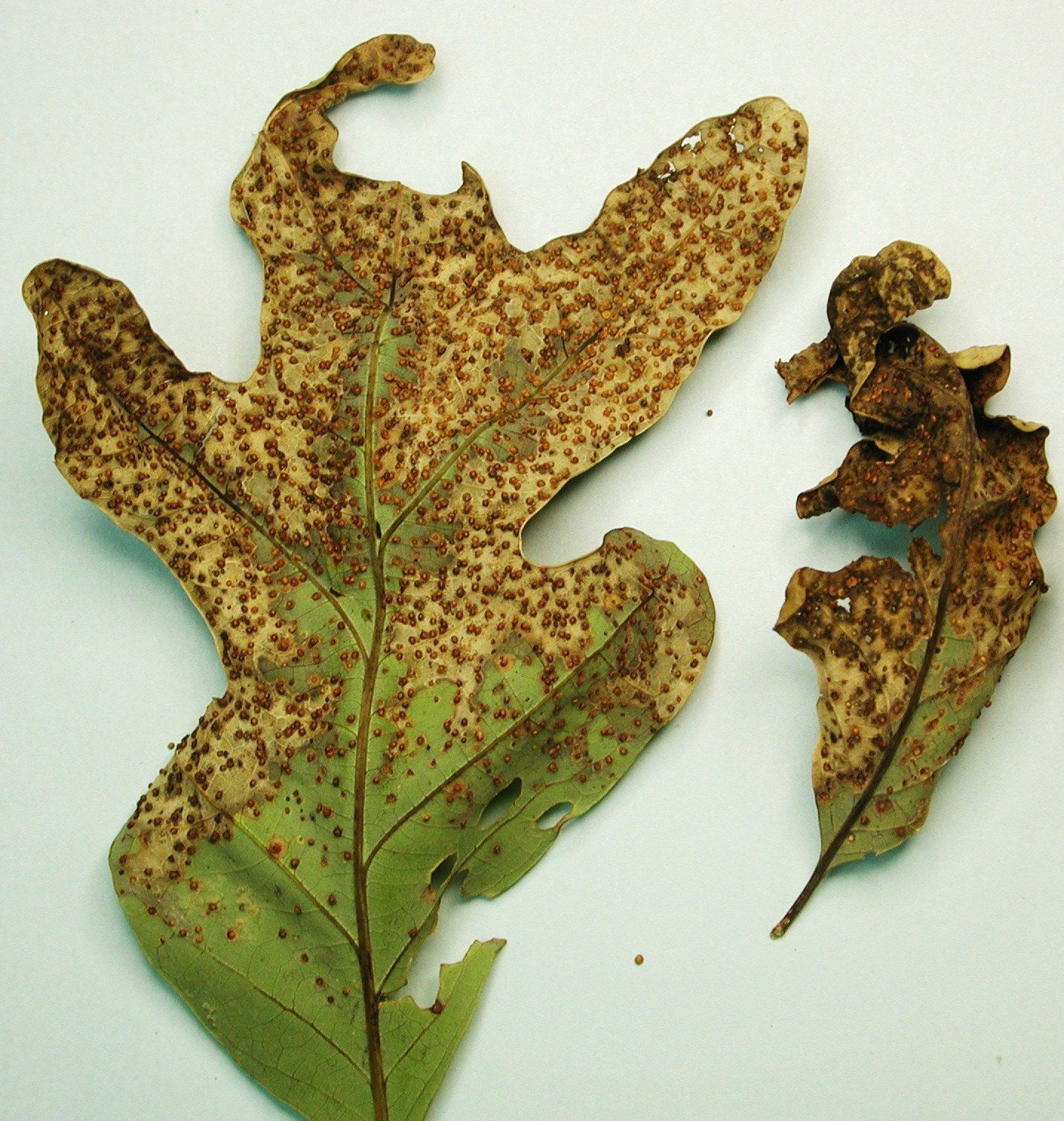Jumping oak galls are caused by a very tiny, native, stingless wasp (Neuroterus sp.) which lays eggs in leaf buds. As the leaf develops, pinhead-size galls (abnormal plant growths) form on the undersides of the leaves. Each round, button-like gall contains one wasp larva.
Tree Species Affected
White oak (Quercus alba) primarily, and some other white oak group species.
Symptoms and Signs
- Brown, scorch-like areas appear on leaves when many galls are present.
- In severe cases, leaves curl up, turn black, and drop early from trees.
- Effects of the damage become noticeable in late spring or early summer and remain visible until fall.
Most galls drop from leaves in early summer. Brown pockmarks remain where galls had been attached. Fallen galls are sometimes observed to “jump” due to vigorous movements of larvae within, much like moth larvae of “Mexican jumping beans.” This behavior allows galls to fall deeper into grass and leaf litter where they are sheltered throughout the coming winter.
Oak Gall Wasp Life History
Many species of gall wasps have two generations per year. It is assumed that the jumping oak gall wasp in Missouri has a similar life history with one generation lasting only a few weeks in early spring and rarely being noticed. The second generation extends from spring through the following winter and causes most of the leaf damage. Outbreaks typically last for one or two years and then fade away as natural controls reduce gall wasp numbers again.
Recommendations
Galls and fungi that affect oak leaves rarely have a significant impact on tree health. Nearly all trees will recover, even if all leaves are brown. Controls are not warranted. By the time the damage is observed, any opportunity to treat has already passed for that year, and populations are likely to decline naturally. However, severe leaf damage stresses trees, particularly if most leaves on a tree are killed, causing a second flush of leaves to emerge in summer.
The best tactic is to practice good tree care to reduce stress.
- Mulch
- Water during drought
- Avoid wounding trees when using lawnmowers and trimmers























